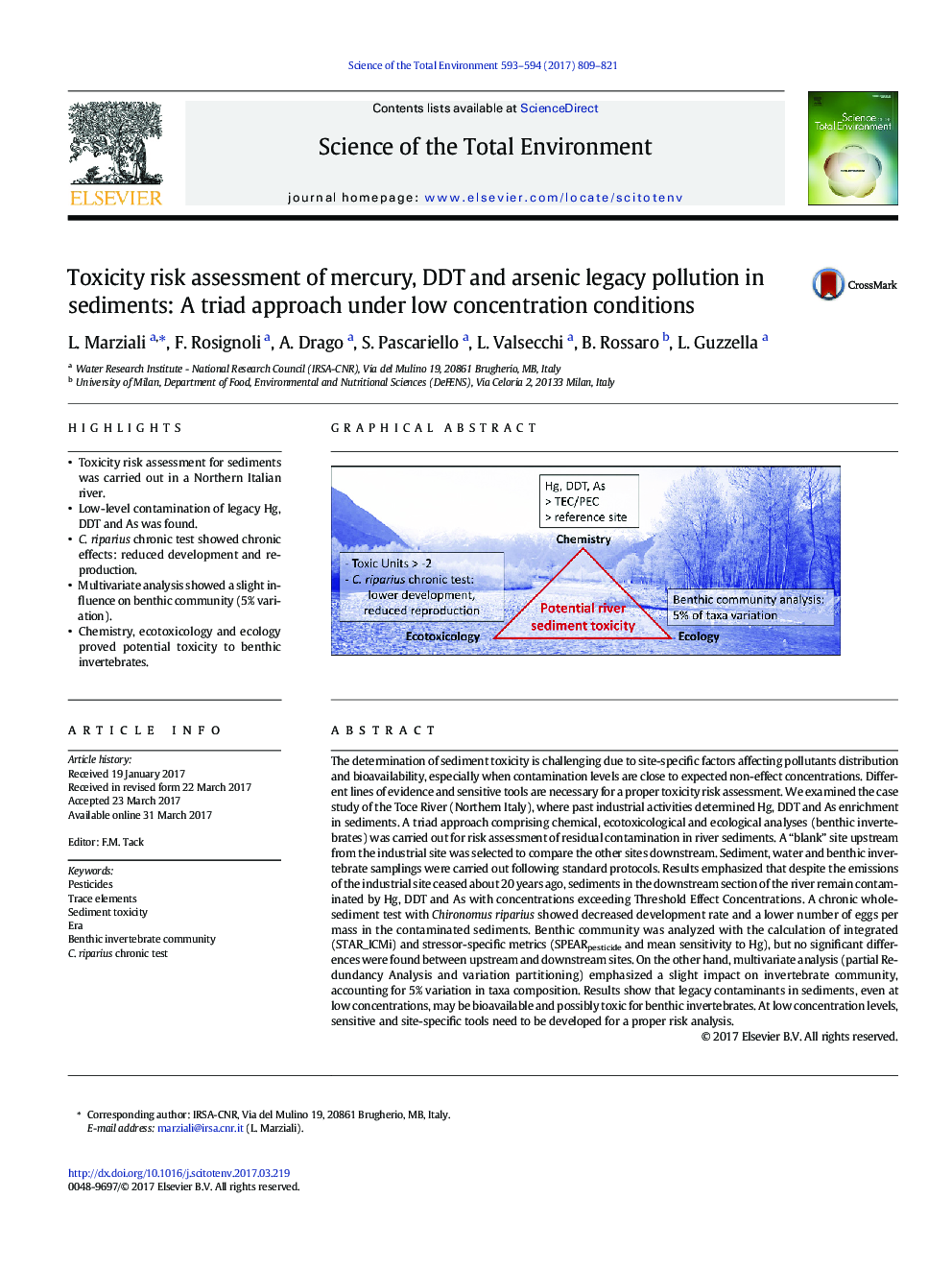| کد مقاله | کد نشریه | سال انتشار | مقاله انگلیسی | نسخه تمام متن |
|---|---|---|---|---|
| 5750909 | 1619702 | 2017 | 13 صفحه PDF | دانلود رایگان |

- Toxicity risk assessment for sediments was carried out in a Northern Italian river.
- Low-level contamination of legacy Hg, DDT and As was found.
- C. riparius chronic test showed chronic effects: reduced development and reproduction.
- Multivariate analysis showed a slight influence on benthic community (5% variation).
- Chemistry, ecotoxicology and ecology proved potential toxicity to benthic invertebrates.
The determination of sediment toxicity is challenging due to site-specific factors affecting pollutants distribution and bioavailability, especially when contamination levels are close to expected non-effect concentrations. Different lines of evidence and sensitive tools are necessary for a proper toxicity risk assessment. We examined the case study of the Toce River (Northern Italy), where past industrial activities determined Hg, DDT and As enrichment in sediments. A triad approach comprising chemical, ecotoxicological and ecological analyses (benthic invertebrates) was carried out for risk assessment of residual contamination in river sediments. A “blank” site upstream from the industrial site was selected to compare the other sites downstream. Sediment, water and benthic invertebrate samplings were carried out following standard protocols. Results emphasized that despite the emissions of the industrial site ceased about 20Â years ago, sediments in the downstream section of the river remain contaminated by Hg, DDT and As with concentrations exceeding Threshold Effect Concentrations. A chronic whole-sediment test with Chironomus riparius showed decreased development rate and a lower number of eggs per mass in the contaminated sediments. Benthic community was analyzed with the calculation of integrated (STAR_ICMi) and stressor-specific metrics (SPEARpesticide and mean sensitivity to Hg), but no significant differences were found between upstream and downstream sites. On the other hand, multivariate analysis (partial Redundancy Analysis and variation partitioning) emphasized a slight impact on invertebrate community, accounting for 5% variation in taxa composition. Results show that legacy contaminants in sediments, even at low concentrations, may be bioavailable and possibly toxic for benthic invertebrates. At low concentration levels, sensitive and site-specific tools need to be developed for a proper risk analysis.
601
Journal: Science of The Total Environment - Volumes 593â594, 1 September 2017, Pages 809-821